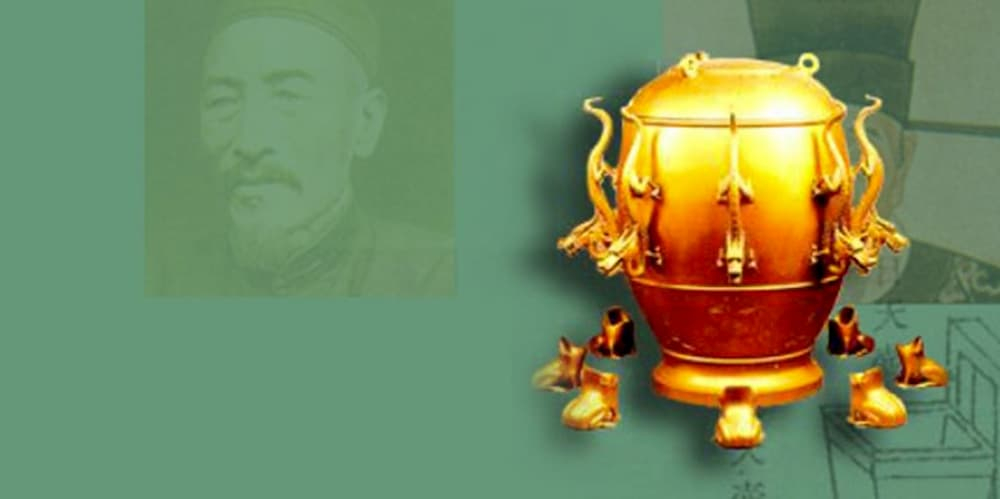
Scientists in Ancient China
Splendid
Chi Culture
Topic
Scientists in Ancient China
As most of China’s current scientific and technological means of production were introduced from the West, it is easy to assume that China was originally a backward country in these fields. In fact, however, for the several millennia prior to the Industrial Revolution in the West, China had been a world leader in science and technology. To illustrate this point, the British scientist and sinologist Joseph Needham (1900–1995) presented pertinent evidence in the twenty-five volumes of his masterpiece, Science and Civilisation in China.
The globally recognized “Four Great Inventions” of ancient China are paper, gunpowder, the compass, and movable type. They mark China’s early contribution to world science and technology.
In addition to the “Four Great Inventions,” ancient Chinese scientists made remarkable scientific and technological achievements in mathematics, astronomy, agriculture, hydraulic engineering, geography, topography, and medicine.
The ancient Chinese valued astronomical observation. From quite early on they developed a calendar to guide farming. In the second century, the astronomer Zhang Heng (78–139) considered the universe to be infinite. He correctly explained solar and lunar eclipses, developed a sophisticated new calendar, and invented the world’s first water-powered armillary sphere (an astronomical clock), which had a great influence on later devices. Another astronomer, the Buddhist monk Yixing (683–727) of the high Tang period, also made distinguished contributions to astronomical observation and calendrical reform.
As a country founded on agriculture, China produced numerous outstanding agronomist and hydraulic engineers in its long history. The Dujiangyan irrigation system has been in use continuously since the third century BCE when engineer Li Bing (ca. 302–235 BCE) designed it. For over 2,000 years, it has provided irrigation for the “Heaven’s storehouse” (modern Sichuan province). In the sixth century, the specialist in agriculture Jia Sixie wrote Qi min yao shu (Essential methods for the common people), the world’s oldest agronomic classic. In this valuable masterpiece, Jia provided a comprehensive introduction to the general features of agricultural production of his age, explained the fine points of the tradition of intensive farming, as well as highlighting the high standard of food processing techniques.
In the field of geography, Pei Xiu (224–271) made a scientific delimitation of mountains ranges and rivers courses in his Yu gong diyu tu (Geographical map of the “Tribute of Yu”), which follows a standard scale and grid. His proposed principles of “proportion, orientation, road distance, and topography” have held an important place in the world history of cartography.
Traditional Chinese medicine has had a great influence on medical practices throughout Asia. The eminent physician Zhang Zhongjing (150–219) of the third century left future generations two great medical monographs. The Shanghan lun (Treatise on cold damage) and Jingui yaolüe (Prescriptions of the golden coffer) laid the foundation for therapeutics in traditional Chinese medicine. Sun Simiao (581–682) wrote treatises, two of which are: Beiji qianjin yaofang (Essential prescriptions for emergency use worth a thousand in gold) and Qianjin yifang (Supplementary prescriptions worth a thousand in gold). His works were an important foundation for the future development of Chinese medicines. Li Shizhen (1518–1593) was a great herbalist of the Ming dynasty. His monumental masterpiece Bencao gangmu (Compendium of Materia Medica), which contains over 1.9 million Chinese characters, is regarded as the most comprehensive pharmacopeia ever written in the history of Chinese medicine. It is still a must-read for today’s students of traditional Chinese medicine.
By presenting the accomplishments of thirty-two ancient Chinese scientists, this section illustrates that China has a civilization with great scientific and technological achievements in its premodern era. China has been producing world-class scientists throughout its long history, but in the last two or three centuries, it has been left far behind by the West in science and technology. Why was China overtaken by the West in science and technology? This is a famous question raised by Joseph Needham in his Science and Civilisation in China, and it is also known as “Needham’s Grand Question.” Everyone can offer a reply, but so far no one has given a convincing answer.



